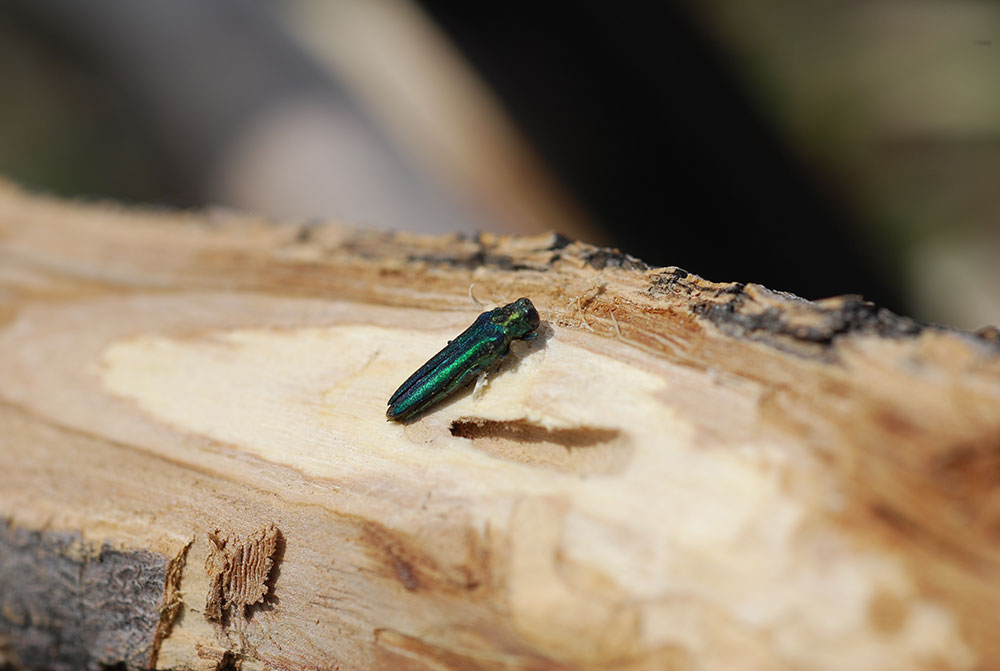You may be familiar with the program formerly referred to as “Ash GAP Removal and…

All Eyes On Me: Emerald Ash Borer Emergence
DENVER — It is already June, which means we are at the start of Emerald Ash Borer (EAB) emergence season! Although EAB has not yet been found in the City and County of Denver, we know it is only a matter of time before its discovery.
EAB emergence season means it is time to start looking for the adult borers who leave “D”-shaped holes in the bark of the ash tree, roughly 1/8 inch in diameter. There are also several other telltale signs of EAB infestation like S-shaped tunnels that can be seen on the trunk and tree thinning and bark shedding. Dying ash trees also attract Northern Flickers, a type of large, brown woodpecker. It can take 2-4 years for trees to show signs of infestation.
EAB chews through the tree’s water and nutrient-conducting tissues, strangling the tree. If there is a high population of EAB in the tree, one-third to a half of the branches may die in one year. Most of the canopy will be dead within 2 years of when symptoms are first seen.
Recent research shows that EAB can have a one- or two-year life cycle. Adults begin emerging in mid to late May with peak emergence in late June. Females usually begin laying eggs about 2 weeks after emergence. Eggs hatch in 1-2 weeks, and the tiny larvae bore through the bark and into the cambium – the area between the bark and wood where nutrient levels are high. The larvae feed under the bark for several weeks, usually from late July or early August through October. The larvae typically pass through four stages, eventually reaching a size of roughly 1 to 1.25 inches long. Most EAB larvae live through the winter in a small chamber in the outer bark or in the outer inch of wood. Then in May or early June new adult borers emerge to begin the cycle again.
Want to learn more about what EAB looks like? As you can see in various images, the EAB is an attractive insect with a dark, metallic-green body and a coppery-red or purple abdomen under its wings. To give you some perspective, at approximately ½-inch long, the EAB can fit comfortably on a penny.
If you have an ash tree that might be showing signs or symptoms of EAB infestation, contact the Office of the City Forester at forestry@denvergov.org or (720) 913-0651.
